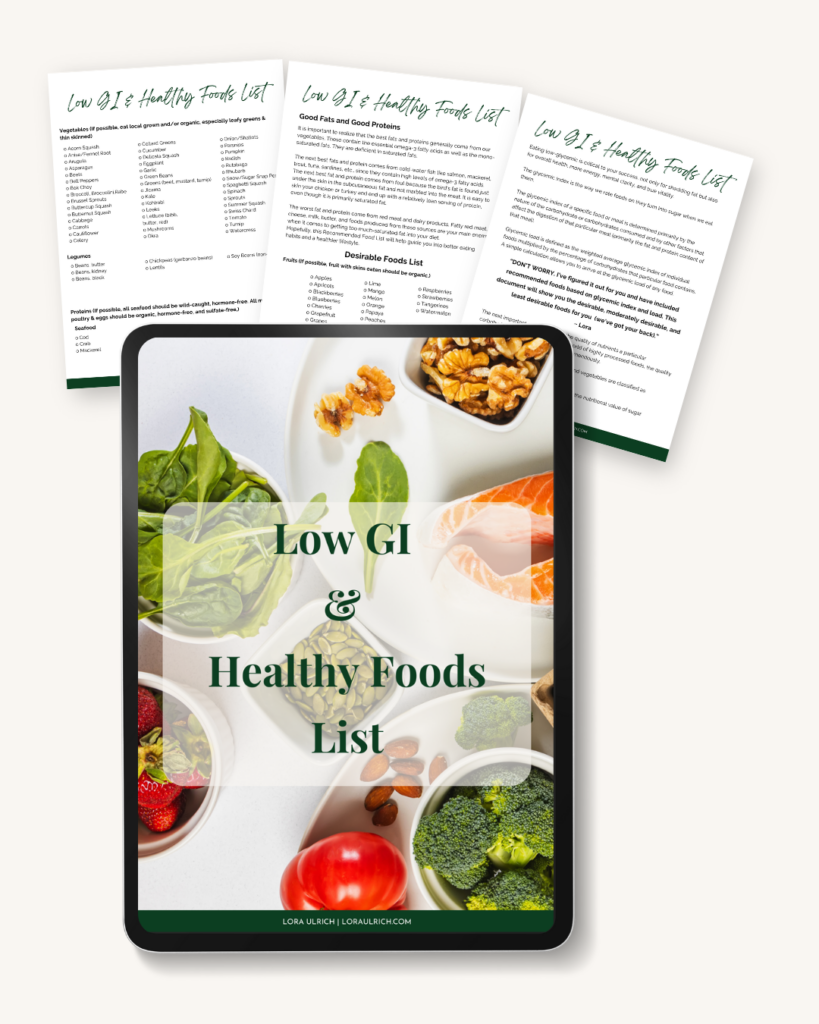Have you ever found yourself reaching for a salty snack or sweet treat and thinking, “Why do unhealthy foods taste so good?“
You’re not alone, and the answer isn’t just about willpower. There are real biological, emotional, and even marketing reasons behind it!
As a certified holistic nutritionist and metabolism specialist who supports women through menopause and midlife, I want to help you understand the why behind your cravings, so you can take charge without guilt!
Keep scrolling to grab your Low GI and Healthy Foods List!
The Real Reason Why Unhealthy Foods Taste So Good: OUR BRAINS ARE WIRED FOR IT
From an evolutionary perspective, our brain is programmed to seek out high-energy (aka high-calorie) foods. Why? Because back when food was scarce, this instinct helped us survive.
Fast forward to today:
Food is more accessible than ever, but our brains haven’t evolved much. That same instinct to grab what’s rich in fat, sugar, and salt? Still very active.
And food manufacturers know it.
They spend billions designing foods that light up our brain’s reward center while offering very little in terms of actual nutrition. These “hyper-palatable” foods are engineered to keep you coming back for more, even when your body doesn’t need them.
How This Affects You in Midlife
During perimenopause and menopause, our body becomes more sensitive to blood sugar spikes, insulin resistance, and inflammation. That means those “harmless” cravings can hit harder and stick longer.
Common symptoms like:
- Belly weight gain
- Energy crashes
- Hot flashes
- Mood swings
…can all be worsened by regularly consuming processed, nutrient-depleted foods.
The Nutrient Deficiency Trap
According to the National Academy of Sciences, most people consume:
- Too many calories, saturated fats, trans fats, and added sugars
- Too much sodium
- Not enough vitamin D, calcium, potassium, or fiber
That’s a recipe for hormonal chaos, especially during midlife.
So, What Can You Do?
Here’s what I recommend to clients (and what I do myself):
1. Follow the 90/10 Rule
Nourish your body with real, whole foods 90% of the time. That gives you flexibility for the occasional treat without derailing your goals.
2. Make Smart Swaps
Craving something sweet? Go for berries with cinnamon. Craving crunch? Try roasted chickpeas or cauliflower crisps. There are options that satisfy without sabotaging your progress.
3. Eat for Balance
Focus on meals that combine protein, healthy fats, and fiber-rich carbs to help balance blood sugar and keep cravings in check.
4. Understanding Your Cravings
You’re not “addicted” or lacking discipline. Instead, your body is sending signals.
Learning to decode your cravings is the first step toward sustainable change.
If you’re not sure where to start, I created a simple guide to help you understand what your cravings really mean and how to respond in a way that supports your body. Click here if you want to understand more about your cravings.
Final Thoughts: Reclaim Your Power Over Cravings
If you’ve ever wondered why unhealthy foods taste so good, now you know: it’s part of biology, part of environment, and entirely human.
But you’re not at the mercy of your cravings. With the right tools and a bit of awareness, you can enjoy food without it controlling you.
Want to Start Making Smarter Food Choices?
Get my #LoraApproved Midlife Blood Sugar-Friendly Foods List below – packed with delicious, blood sugar-friendly foods that support your hormones, energy, and metabolism in midlife (totally free 🎁).

FAQs about ‘Why Do Unhealthy Foods Taste So Good?’
They’re engineered to trigger your brain’s reward center using fat, sugar, and salt, making them hard to resist.
Your brain is wired to crave high-calorie foods for survival, and food companies amplify this with hyper-palatable ingredients.
It lights up dopamine pathways in the brain, creating pleasure, even if it lacks real nutrition.
It gives a quick energy and mood boost by spiking blood sugar and triggering feel-good chemicals, though the effect is short-lived.
+ show Comments
- Hide Comments
add a comment